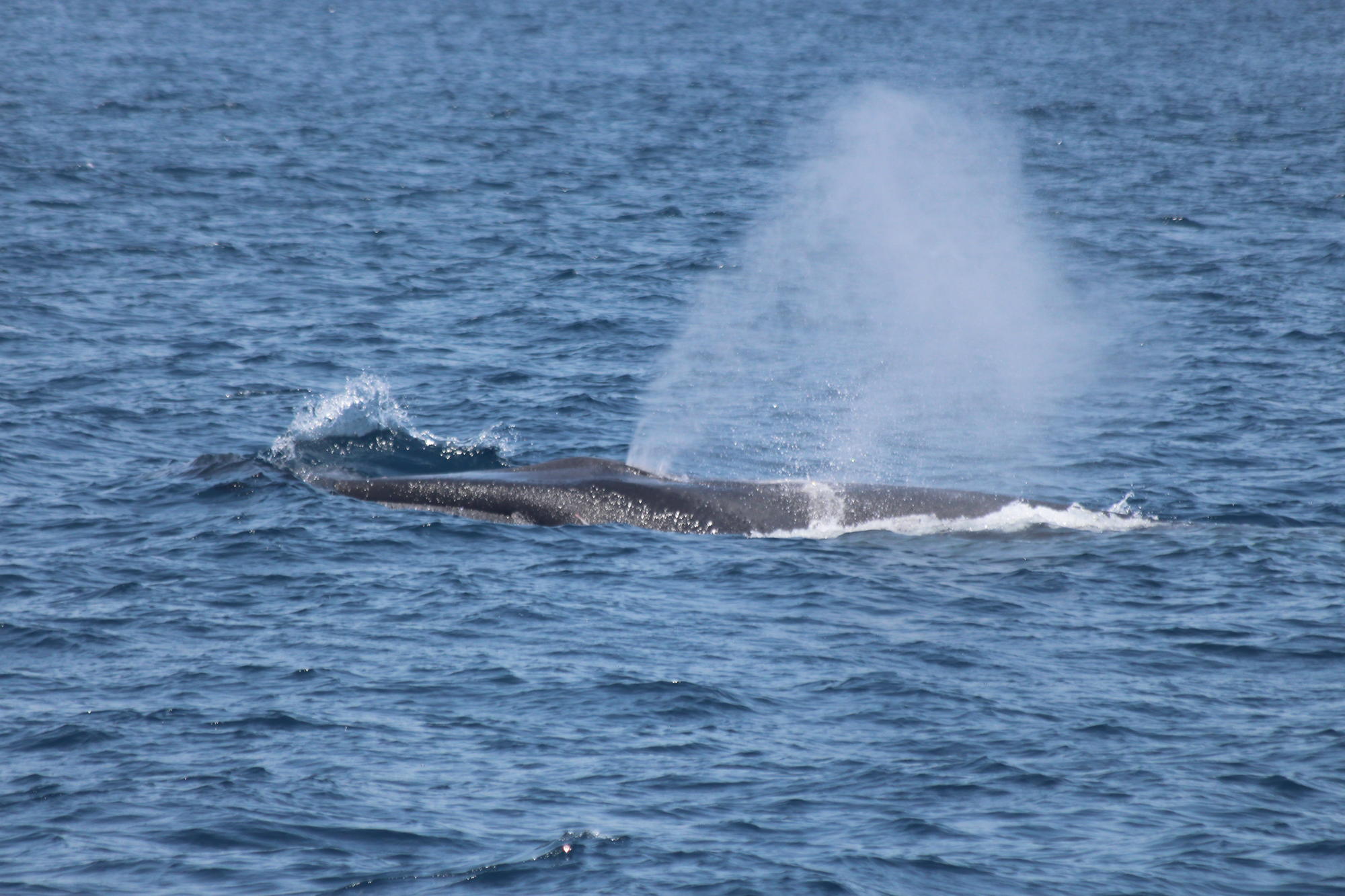Fin Whale (Balaenoptera physalus)

What do we know about the Fin Whales in the Strait of Gibraltar?
To see a Fin Whale on a whale watching tour from Tarifa is not very common and is therefore always a special event. As a very fast swimmer, the second largest animal in the world crosses the Strait of Gibraltar in about an hour.
In the southern hemisphere, Fin Whales undertake extensive migrations between polar feeding grounds and temperate mating grounds. Probably thanks to the Gulf Stream, they don't cover such long distances in the northern hemisphere. For example, some populations live year-round in the north of the North Atlantic, and there are also populations that spend the entire year in the Mediterranean. Read more about this in our Fin Whale research report.
The Fin Whale is the second biggest animal in the world.
Some of "our" Fin Whales have their mating grounds off the French Mediterranean coast and in the Ligurian Sea (between Corsica, Italy and Monaco). Where they spend the summer in the Atlantic is not known with certainty until today.
Strangely enough, we occasionally observe Fin Whales that migrate atypically to the Mediterranean in summer. Perhaps they belong to the population that lived off Gibraltar once and was practically eradicated through whaling.
Hunting Fin Whales
Since Fin Whales can reach speeds of approx. 40 km/h, they remained at first spared from the whale hunt. Only when at the time of the industrialization fast motor ships were produced, also this whale species was strongly hunted. In 1921 the activities of the first whaling station in the Strait of Gibraltar began: on the beach of Getares in the Bay of Algeciras. Until the station ceased operations in 1961, some 6000 Sperm Whales and Fin Whales were killed from here. Others died through whaling companies in Ceuta (African side of the Strait); off the Atlantic coast of Galicia the hunt for Fin Whales even continued until 1989.
About 90 Fin Whales migrate through the Strait of Gibraltar every year.
Whether the number of the Fin Whales slowly recovers after the years of the hunt, cannot be determined with our few sightings. Currently, about 90 Fin Whales pass through the Strait of Gibraltar per year; we rarely observe more than 20 animals per season. Let's hope that despite pollution and overfishing at least a partial recovery of the population will take place.
Facts worth knowing

- dark grey or brownish back
- belly, underside of flippers and fluke and right side of lower jaw are white
- variable greyish white chevron behind head
- small, falcate dorsal fin in the back third of the body
- narrow, tall blow (4-6 meter high)
| Fin Whale (Balaenoptera physalus) | |
|---|---|
| Suborder: | Baleen Whales |
| Family: | Balaenopteridae (Rorqual Whales) |
| Size: | 18–22 m, 30–80 t |
| Size at birth: | 6.5 m, 1,500 kg |
| Life expectancy: | 100 years |
| Sexual maturity: | with 6 years |
| Reproduction: | every 3 years |
| Gestation period: | 12 months |
| Nursing period: | approx. 12 months |
| Food: | krill, fish and squid; 2,000 kg/day |
| Speed: | approx. 40 km/h |
| Diving time/depth: | approx. 15 min, up to 450 m |
Fin Whale – Video

























